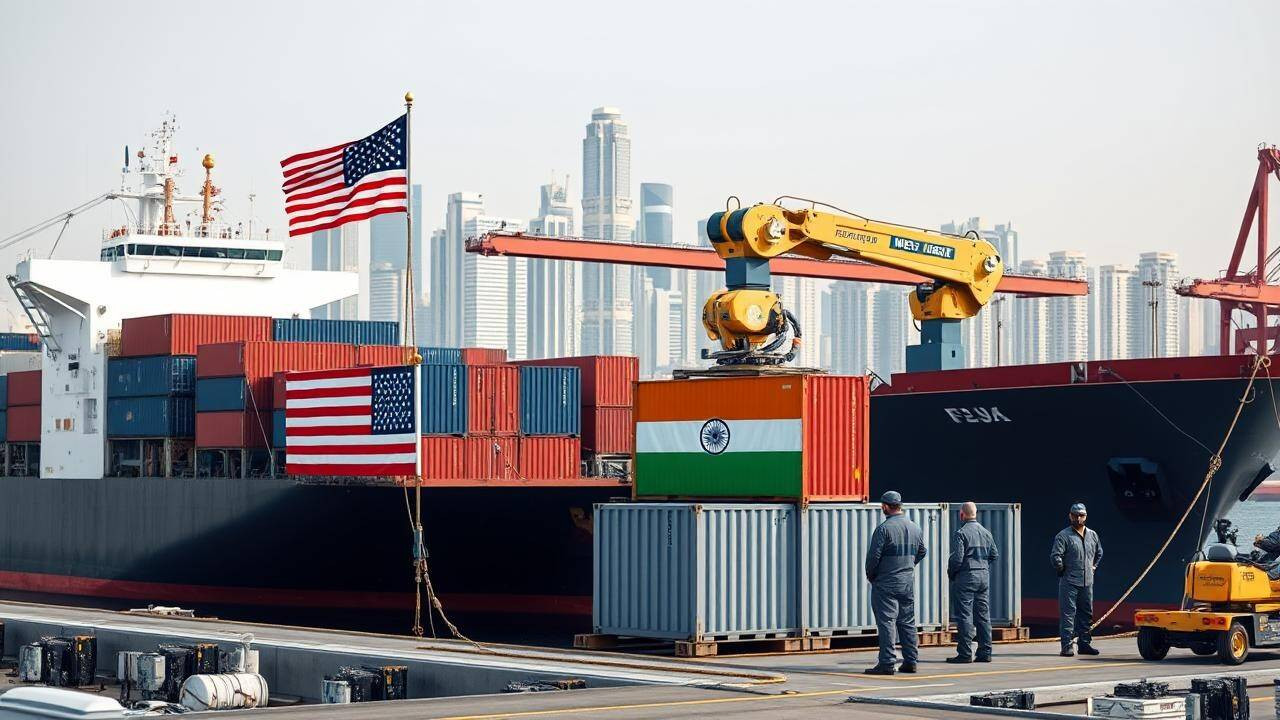India’s defence sector has surged, outperforming all others with a 34.82% return in six months, driven by government support and strong order visibility. PSUs like HAL and BEL lead the rally, fueled by ‘Make in India’ initiatives and geopolitical tensions. While defence funds see gains, experts caution against chasing momentum due to potential valuation consolidation.
India’s Defence Sector: A Rocketing Rise or Just Turbulence?
The Indian stock market is a dynamic beast, a constant push and pull of sectors vying for investor attention and capital. But lately, one sector has been quietly, and not so quietly, outperforming the rest: defence. Over the past six months, defence stocks have soared, leaving other sectoral indices in their contrails. The numbers tell a compelling story – a surge of 34.82%, leaving the Nifty index eating dust. This begs the question: Is this a sustainable climb or are we witnessing a temporary updraft before a return to earth?
What’s fueling this ascent? Several factors are at play, creating a powerful tailwind for the Indian defence industry.
Firstly, there’s the government’s unwavering focus on “Make in India” initiatives, particularly in the defence sector. This isn’t just lip service; it translates into tangible policies that encourage domestic manufacturing, reduce reliance on foreign imports, and incentivize local companies to innovate and expand. Consider, for example, the increasing number of defence contracts being awarded to Indian firms, a trend that’s injecting significant capital and confidence into the sector. This policy shift provides a fertile ground for growth, attracting investment and fostering technological advancements.
Secondly, geopolitical tensions in the region and beyond are, unfortunately, a constant reality. This creates a sustained demand for defence equipment and technology, a demand that Indian companies are increasingly positioned to meet. The need for a strong and self-reliant defence capability is no longer a theoretical concept; it’s a strategic imperative, and one that’s driving significant investment in modernizing the armed forces.
Is the Rally in Defence Stocks Sustainable?
While the recent performance of the defence sector is undoubtedly impressive, the million-dollar question remains: Can it last? Is this growth built on a solid foundation, or is it a bubble waiting to burst?
Several indicators suggest that this rally has legs. The government’s commitment to indigenization is unwavering, with a clear roadmap for increasing domestic defence production. Furthermore, the ongoing modernization programs of the Indian armed forces represent a long-term growth opportunity for the sector. The scale of investment required to replace aging equipment and acquire cutting-edge technologies is substantial, ensuring a steady stream of orders for domestic defence companies.
However, it’s crucial to exercise caution. The defence sector is inherently cyclical, influenced by geopolitical events and government spending priorities. A sudden shift in either of these areas could impact the sector’s growth trajectory. Moreover, the sector faces challenges in terms of technological innovation, supply chain management, and skilled workforce development. These challenges need to be addressed to ensure long-term competitiveness and sustainability.

The Defence Sector’s Future: Opportunities and Challenges
Looking ahead, the Indian defence sector is poised for continued growth, albeit with its share of challenges. The increasing emphasis on exports presents a significant opportunity for Indian companies to tap into the global defence market. By leveraging their cost competitiveness and technological capabilities, Indian firms can carve out a niche in specific segments of the global defence supply chain.
For instance, companies specializing in niche technologies, like drone technology or cybersecurity solutions, could find significant export opportunities. You may be interested in reading about our previous coverage of the emerging drone tech sector in India.
However, to capitalize on these opportunities, Indian defence companies need to invest in research and development, forge strategic partnerships with global players, and enhance their manufacturing capabilities. Collaboration between government, industry, and academia is crucial to fostering innovation and building a robust defence ecosystem.
Moreover, ethical considerations and responsible governance are paramount in the defence sector. Transparency and accountability in defence procurement processes are essential to prevent corruption and ensure that public funds are used effectively.
Investing in the Defence Sector: A Calculated Risk?
Ultimately, investing in the defence sector requires a nuanced understanding of the underlying dynamics and a long-term perspective. While the sector offers significant growth potential, it’s not without its risks. Investors should carefully evaluate the financial performance, technological capabilities, and management quality of individual companies before making any investment decisions. Diversification across multiple defence companies and a thorough understanding of the sector’s regulatory landscape are also crucial for mitigating risk.
The rise of India’s defence stocks is a testament to the country’s growing capabilities and ambitions in the defence sector. Whether this growth is a fleeting phenomenon or a sustainable trend remains to be seen, but the underlying drivers suggest that the Indian defence sector is on a path of long-term growth and transformation. The key will be navigating the challenges, capitalizing on the opportunities, and ensuring responsible governance to build a truly self-reliant and globally competitive defence industry.







